BLOG-From the Fiber Forum
- Published: April 26, 2015
Saturday morning, residents of Yellow Springs gather in the Morgan Building next to the high school to talk about a municipal fiber optic network. The Miami Valley Educational Computer Association (MVECA) is hosting a Fiber Forum from 9am to 1pm followed by lunch and small group roundtable discussions.
9am We begin with a welcome by Tim Barhorst. Barhorst is the lead coordinator of the local citizens’ group that organized today’s forum. The group YS Community Fiber came together in 2014 to advocate for local infrastructure improvements that would bring high speed, affordable internet to the village’s businesses and residents. Specifically, the group advocates for the installation of a high capacity fiber optic network around the village to replace copper and cable as the main conduit for telephone, television, and internet services. This installation would improve access to an essential utility and offer a tasty carrot to tempt new businesses to the village.
The members of YS Community Fiber discovered their common interest on group bulletin boards on Facebook. When I posted a question to an open group: “What would it take to get municipal broadband?”, the answer I got was “It’s easier than you’d think.” The first big reason is that Yellow Springs owns its electrical service utility and, with that utility, many of the telephone polls in the village. Thus, it has control of conduits necessary to propagate a fiber network. Another big reason is MVECA, the morning’s host. MVECA is a datacenter which means it is a telecommunication hub. It receives signals from multiple providers and funnels managed services and data to customers. When a village is close to a datacenter, the municipality has ready access to the high speed telecommunication backbone. It’s like being right off the exit of a major highway; only this super highway buses the ones and zeros of digital messages instead of trucks and cars.
Yellow Springs Community Fiber—also known by the name of its website Yellow-Springs.Net—has been steadily working over the year to build support for the strategic upgrade to the village’s telecommunications infrastructure. The citizens’ group convinced the village counsel in November 2014 to join Next Century Cities, a national organization that offers communities advice on broadband issues. To promote the conversation within the community, the group published yellow pamphlets featuring the striking graphic of a raised fist clutching a strand of light infused fiber. With the sponsorship of the Jailhouse Suites, it created buttons for village members to display their support.
9:10am Now that Barhorst has welcomed a crowd of 70 participants, Gregg Dunn of Ice Miller Strategies takes the podium. He discusses the different perspectives of strategic partners. Dunn has represented several public and private clients on telecommunications projects and stresses that local governments are the natural leaders of infrastructure projects. However, he cautions that major investments benefit from the contributions of other strategic partners such as state and federal government, private entities. Dunn observes with optimism that the current political environment is favorable. Ohio’s administration and the federal administration, though controlled by opposing political parties, both see broadband as a smart investment. He notes that, among state advisors and at the Federal Communications Commission, the influence of major telecommunication companies is at a low ebb.
9:40am Next up is Chris Mitchell, Director of the Community Broadband Network Initiative with the Institute for Local Self-Reliance (ILSR). He talks with us via video chat from his home office; briefly we can hear his beagles baying from his backyard. He tells us that, most often, local governments invest in telecommunication networks to provide a better environment for business. Some initiatives have also addressed the digital divide, i.e., disparities in telecommunications access among households representing different socioeconomic levels. Mitchell asserts that high speed internet has become essential for competitiveness; local governments have found the big telecommunication companies reluctant to make investments necessary for high quality, competitive services. When local governments take control and make those investments themselves, they can operate the local fiber network to sustain a competitive marketplace rather than the monopolies for-profits prefer. Private networks also tend to operate asymmetric data services such that upload speeds are much slower than download speeds. For the sake of setting its member business up for success, public networks are motivated to operate symmetrically: Data are sent and received at the same speed, and businesses—particularly home based businesses—can deliver content as effectively as content can be consumed.
10:15am The city manager of Dublin, OH Dana McDaniel weaves his tale of Dublink. Dublin, OH is a city at the north west corner of the greater Columbus area and it has frequently been distinguished one of the top 7 intelligent cities of the world. Dublink is the reason behind this distinction. The City of Dublin made a major investment in its roads in the 1990s and didn’t want businesses continually digging up their streets. The city invested in 25 miles of underground conduit through its business sector. At the same time, private companies invested in a hundred mile loop of conduit around Columbus OH which Dublin later bought in 2004. The city began to purchase fiber in the late 1990s and, over the decade, continued to make slow steady investments even while the overly ambitious private industry retrenched after the telecommunications bust of 1999.
In all, Dublin spent $5.5 million on conduit and fiber and has received a return on investment of at least $35 million from avoided costs, leases, and significant gains in employment and tax revenue. The project was originally funded through income tax revenues dedicated to capital improvement projects and financing bonds.
McDaniel tells us how, over time through various initiatives and opportunities, Dublin leveraged their installed network to strengthen ties between area businesses, academics, and local government, reduce utility costs, and increase the diversity and quality of community produced products. Dublin recently made a additional investment in fiber—its first since its initial purchase—in order to establish a backbone 10 times faster than the present one.
10:50am We take a short break, and my neighbor Phyllis takes the opportunity to ask me about conduit and what would have to be done to bury it in Yellow Springs. We consult a few people at the meeting including our previous speaker McDaniel of Dublin and the next speaker Alex Figuero of Corning Inc. McDaniel tells us that Dublin made the decision to bury all of its fiber, but he would expect Yellow Springs to take advantage of its telephone poles instead. Using the poles will greatly reduce the cost of installation, he reassures us. Alex Figuero produces several samples of the fiber cables that would feed through the conduit, and he passes the samples in labeled boxes around the room for everyone’s inspection.
11:00am Figuero gives us a tutorial on what fiber optics is. Basically, fiber optics are a high quality glass that guides light signals much like copper wire guides electric power. The high quality glass has many advantages over copper. First it allows light to travel faster than electricity can flow over copper. Less resistance in the glass fiber means that signals can travel faster than they can in copper and with less attenuation or loss per unit length. Unlike copper, glass fiber is not susceptible to lightening strikes and does not corrode or tarnish. Glass is also lighter than copper. Copper does have advantages over glass: it is easier to splice copper wires together and to turn tight corners.
Figuero tells us about the different types of fiber cables used in a telecommunication network and also the different sources used to produce the signals that the fiber transports. Single mode fiber and a high quality laser source are used to send light signals over long distances. Within their limited geography, datacenters use multi model fiber paired with less expensive, lower quality lasers—typically, vertical-cavity surface-emitting lasers—so that they can densely pack connections and switches together at a reasonable cost.
Figuero spoke of the “unlimited” bandwidth of fiber optic which refers to the theoretical limitation in switching signals that the material can support. Basically, as fast as we can currently turn on and off a signal, the fiber optic material will respond. In a fiber optic network, the practical limitation in bandwidth is determined by the light source. As sources improve, they can be readily upgraded to interface with the existing long strands of conducting fiber.
11:25am Deb Socia, the Executive Director of Next Century Cities, welcomes Yellow Springs to its consortium of 50 plus cities seeking gigabit internet. Socia described the principles that govern Next Century Cities: Principally, high speed internet is necessary infrastructure and a community wide enabler. Meaningful competition among providers drives progress in service and the quality of those services. Communities must enjoy self-determination in securing high speed internet to ensure common access, and collaboration should benefits the general good. She points out that local control of a municipal infrastructure offers a high level of accountability. To illustrate the lack of accountability when control is not local, she conveys the experience of one community whose incumbent telecommunication company attempted to convince its citizens that they needed no more than 10 megabits per second download speeds for high speed internet…this despite the fact that the federal government defines high speed internet as having speeds of 25 megabits per second at minimum.
Socia promoted several applications of truly high speed, symmetric internet services. She noted the growing interest in healthcare services for which—as an example—the Federal Communication Commission is offer financial support for “initiatives connecting broadband services and health care delivery”. She cited education enhancements especially to rural schools who wish to offer enrichment opportunities to students through distance learning. Other broadband-enhanced applications she outlined include transportation, civic engagement, public safety, e-government, real estate and neighborhood-centric services and—last but not least—economic development.
11:45am Kevin Schoen—CEO of ACD, an independent phone and internet provider based in Michigan—followed Socia and provided a few cautionary tales where communities have met trouble in the implementation and maintenance of network. He noted that many residents prefer the telecommunication infrastructure to be invisible and are disconcerted about the hutches needed to deploy fiber-to-home solutions within a community. He recommends that a community establish clear rules for private partners regarding the installation of equipment in residential areas such that the rules balance technology concerns and those of community character and quality of life.
12:00pm Jeremy Pietzoid joined us remotely from the west coast and told us the story of Sandy Oregon where he lives with his family. Pietzoid is currently City Council President for Sandy and recently sent a letter with Mayor Bill King to the Federal Communications Commission on the subject of municipal broadband.
The letter states, “It is increasingly clear that ultra-fast, next-generation Internet networks are the key to building and sustaining thriving communities, as essential as good healthcare, great schools, and reliable public safety. Indeed, in the coming decades, the Internet will increasingly become a platform for delivering these and other core services to our citizens, in addition to providing an onramp to the jobs and opportunities of tomorrow. Providing high-quality Internet is inarguably essential to safeguarding the public interest in the years and decades to come.”
The city’s municipal internet service provider SandyNet started out as a wireless municipal broadband service in 2003. The project was initially bolstered by grassroots efforts with people like Pietzoid building wireless antennas into newly constructed homes to provide the backbone infrastructure. The wireless system could not keep up with demand, however, and the SandyNet Fiber project was kicked off as a long term solution for the community. After a couple of false starts with private partners, the City of Sandy took lead—funding the project through a revenue bond issued by the city counsel in February 2014—and has recently completed the deployment of the fiber optic network to 3 of 4 residential and business zones. Splicing is happening now in the fourth and final zone and work is slated for completion by the end of this spring. SandyNet accomplished this impressive feat in a town of 10,000 people and 3,500 households; it currently has approximately 1,800 customers signed up for its new network. Pietzoid believes that it is easier for small communities like Sandy and Yellow Springs to develop well defined services that benefit its population and notes that the village of Yellow Springs has advantages that Sandy did not, in particular the proximity of a datacenter and a municipal owned electrical utility. The City of Sandy decided to bury its fiber network which greatly impacted cost. Like Dublin’s city manager, Pietzoid expects Yellow Springs to take advantage of its telephone poles.
Pietzoid owned my favorite moment of the forum when he presented his analogy of broadband to other utilities. He asked us to imagine having to shout down the hall for someone to turn off a television show because you want to turn on the microwave for a few minutes or to turn off the shower because you want to flush a toilet or wash dishes in the sink. He finds it equally inconvenient to have to shout down the hall for your spouse to get off the internet because you want to download a movie or upload a report.
Along with several other forum attendees, I appreciated hearing Pietzoid advocacy for residential high speed internet. I also appreciated learning the timeline on which the City of Sandy stood up SandyNet. By standing up the wireless system first, Sandy was able to grow its customer base and add to its wireless network as that base grew. SandyNet had approximately 1,200 customers on the wireless system before the City of Sandy made the investment in fiber. They were able to establish “stickiness”—a term Mitchell had described earlier in the morning—where customers sign up for a service and stay loyal.
12:30pm Thor Sage, Executive Director of the Miami Valley Educational Computer Association (MVECA), takes the podium. Summarized the findings of the day, he pointed out Yellow Springs’ unique factors for success. First, he outline the contributions of the village-owed electrical utility. Village ownership minimizes engineering and make ready costs, and the village can wave its attachment fees to the telephone poles it owns. Start up design, planning, and construction costs are significantly reduced and ongoing maintenance costs are also reduced. Second, village has the datacenter at MVECA and existing network infrastructure already in place. The datacenter has redundant and robust internet connections and capacity for server hosting. MVECA has established benefits to local schools and governments through its offerings of managed network, voice, and wireless services. To support these services MVECA has significant fiber resources in place and other beneficial projects in planning. Sage took to the time to relay the special resource that MVECA is to the region. MVECA exists as a regional councils of government which services six member counties: Clark, Clinton, Fayette, Greene, Highland, and Madison. It works with multiple community on advanced telecommunication applications. The association has the power to study area governmental problems common to two or more members of the counsel and to promote cooperative arrangements among the membership. In other words, we are not alone. We have likeminded partners interested in high speed telecommunications; other communities—at the forefront Springfield and Wilmington—have initiated broadband projects from which we can draw inspiration and perspective.
In a summarization of the forum, Sage spoke with optimism about the natural cost controls that Yellow Springs has in place. He felt energized at the opportunities for public/private partnerships and for collaborations with other communities within the MVECA membership and beyond that membership to communities such as Dublin, Columbus, and Dayton. He cited the examples discussed in the forum regarding economic development…in particular the compelling testimony from our neighbors in Dublin OH. He touted the forethought of previous generations in Yellow Springers who secured public ownership of critical utilities and the benefit we still reap from that ownership.
12:50pm As Thor Sage makes his case, our lunch boxes from Current Cuisine appear in the hallway off of the meeting room. Sage concludes, and the forum attendees queue up for their meal while a group of facilitators rearrange the room from the small group discussions.
We gather round the tables about ten people each at six different stations and discuss the strengths and weaknesses of the village in such a project then the opportunities and threats that currently present themselves. Among the strengths, we rank high the existing datacenter and municipal utility along with the interests for economic development and for local control of the “essential” resource. Participants list funding concerns among the top weaknesses along with the attainment of public consensus and robust government action. Under opportunities, the obvious benefits to attracting new residents and businesses rank high. For top threats, we place resistance from incumbent service providers, the unknown financial and security impacts to the community, and the dangers of getting left behind.
1:50pm As people make ready to leave, I seek out several attendees to discern what impressed them the most. Most acknowledge that they learned a great deal over the forum. I hear a mix of excitement and restraint as people oscillate between a deep appreciation for village’s capacity and a nagging skepticism about its dexterity. I come away most pleased at the stories conveyed by Dublin and Sandy. I see in Dublin as a prosperous ally and influential mentor. In Sandy, I see a likeminded town whose citizens applied innovative grassroots initiatives to build up consensus and resources to fulfilling capacity. For me, the unexpected takeaway centered on those grassroots efforts. In those efforts, we can risk, test, and debate with freedom while we press against the more resistive levers of collective change. We need not wait for this change. It is already here working in our community. We can built it better together.
The Yellow Springs News encourages respectful discussion of this article.
You must login to post a comment.
Don't have a login? Register for a free YSNews.com account.





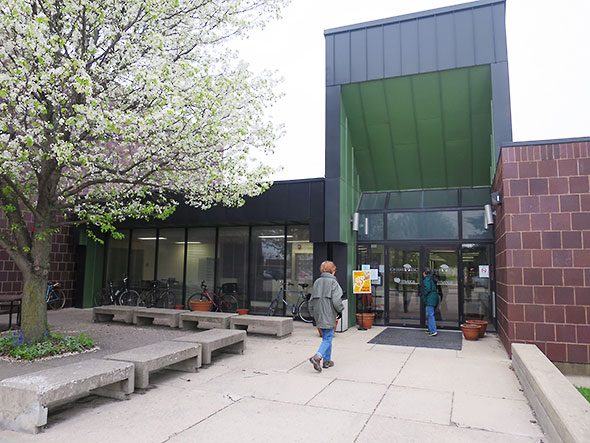

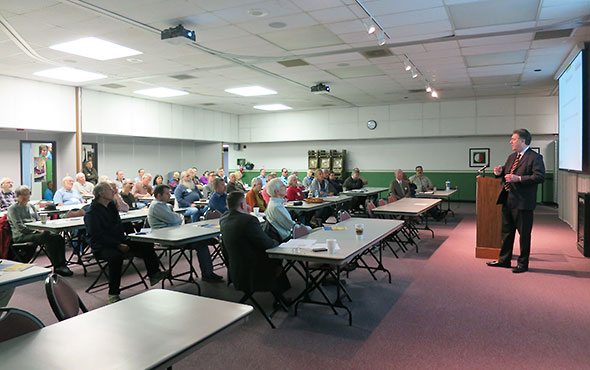
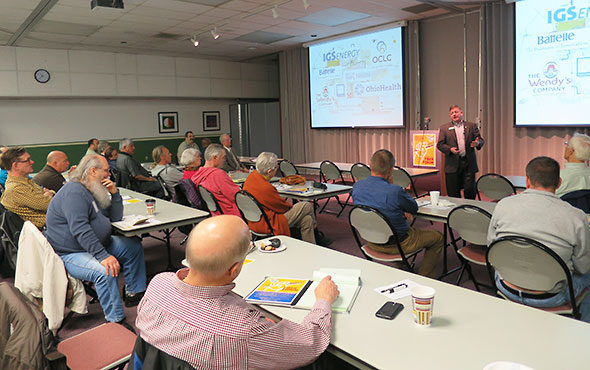
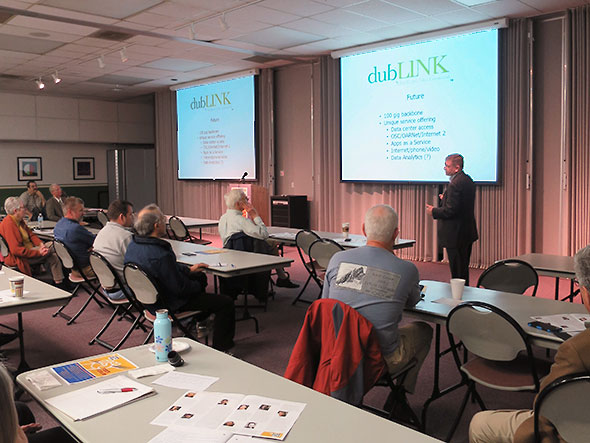
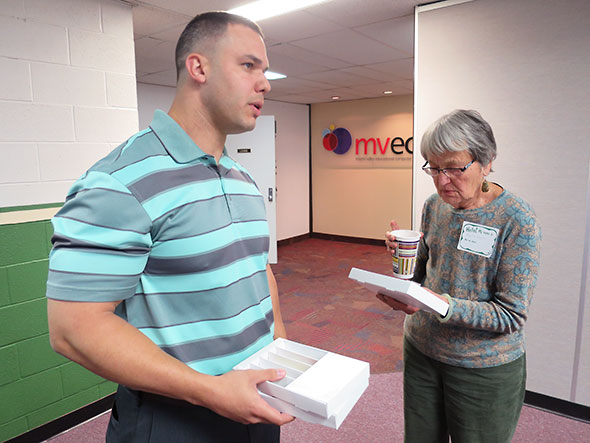
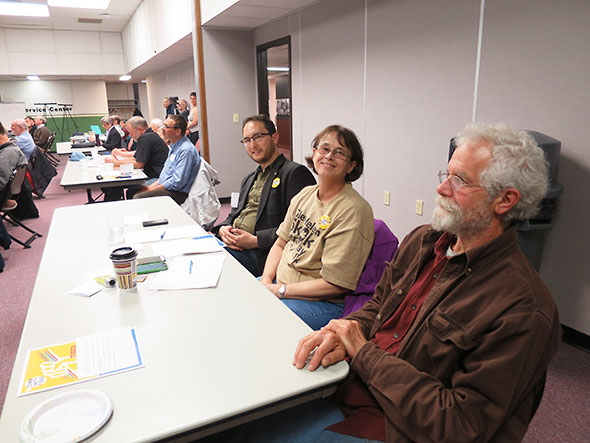
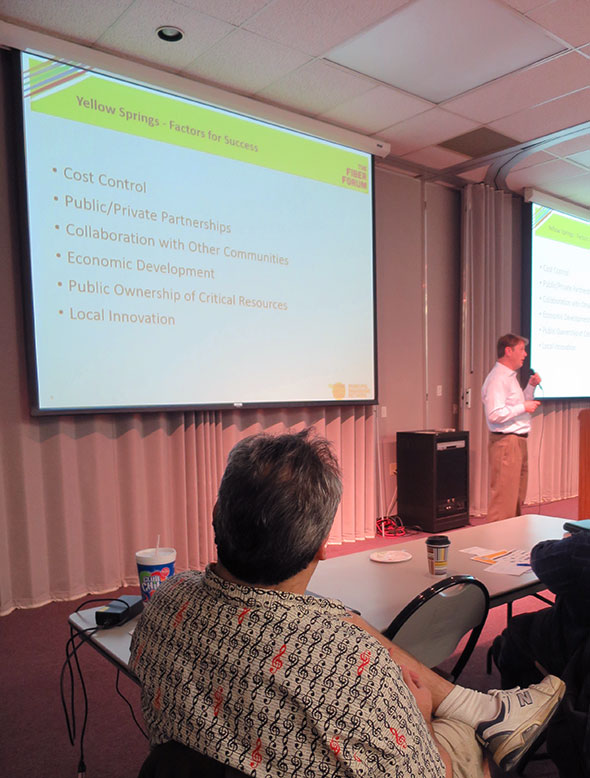



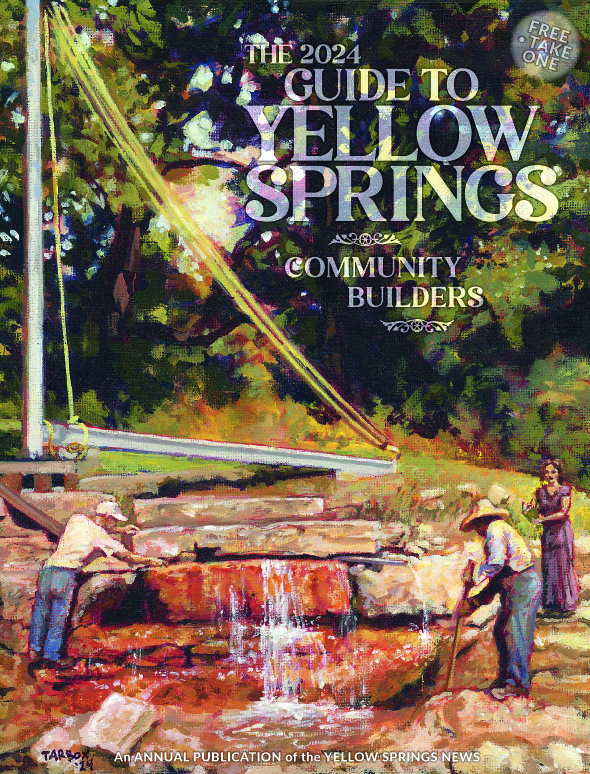









No comments yet for this article.